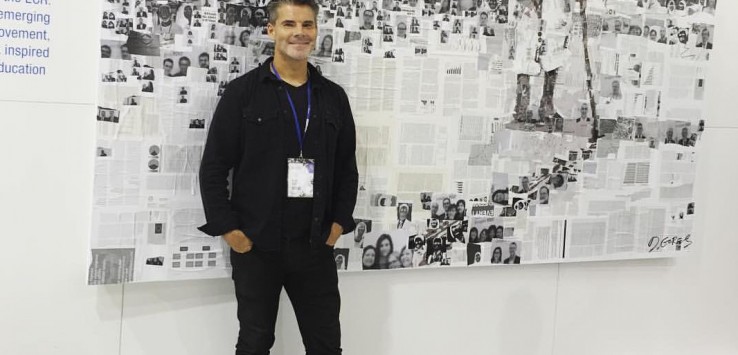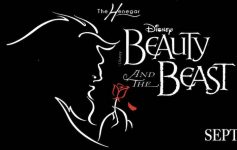A detail of a photo of Derek Gores who was in Vienna, Austria, finishing a commission for a client.
By PAM HARBAUGH
If you’re thinking buying a piece of Derek Gores’ art for a Christmas present, you better act fast. His work is continually rising in value and a small piece that is $900 this month could shoot up to more than $1,000 after the new year.
Because there is no doubt, the Melbourne artist continues to gain national and international recognition. For proof, look no further than the cover of Playboy’s limited edition tribute issue honoring its late founder, Hugh Hefner. The issue is on newsstands now.
Gores created the cover.
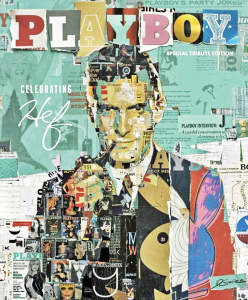
Playboy cover design by Derek Gores
“In terms of visibility and a commercial commission, this has to be the top…so far,” he said. “I’ve done things for big brands, like the NFL, but this is the biggest.”
Gores’ collage art can be seen in the large Orlando Magic panels installed in Orlando’s Amway Center. In 2013, he was tapped by the Kentucky Derby to create its official poster.
While those organizations reached out to Gores, it was the artist who reached out to Playboy.
Within days of Hefner’s passing last September, it dawned on Gores that the magazine would do something special to celebrate its founder’s life and legacy.
Given the fact that Gores uses recycled magazines in his collage art and that his recurring theme is strong, beautiful women, he thought he would be the perfect choice.
“I sent them a brief, three-line email,” he said. “Here’s what I do. Here’s my art. I’d love to chat.”
Within two hours, he got a response. Playboy wanted to talk.
The magazine quickly commissioned Gores, who demurred in revealing how much he was paid.
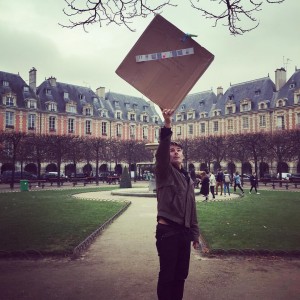
Derek Gores delivering art for a client in Paris, France.
However, his work has gone up about 20 percent each year for the past 10 years. His small “Butterfly” series of 12 by 12 inch canvases currently cost $900. An average sized canvas is about 30 by 30 inches and cost about $4,000. Larger pieces start at five figures.
That news is fine with one of his collectors, Loretta Grella Sorbello, owner of the Downtown Divas boutique in Melbourne. She bought her first piece 10 years ago and now owns five.
“I knew from the moment I saw his work that he would make a name for himself,” she said. “I am so thrilled at all he has accomplished and his success.”
After the call, Playboy overnighted a box filled with nearly two dozen magazines, including the first one with Marilyn Monroe on the cover, and other groundbreaking covers such as the first African American woman on the cover. The company also gave him access to its digital archive.
“They gave me complete creative freedom,” Gores said. “When Hugh Hefner died, they had an issue coming out with a black and white photo. So they wanted this picture for the limited edition tribute issue to be more celebratory. That let me be more colorful.”
“They sent me a couple of photos to be the main image. I picked the most iconic one, to my knowledge, with the slight wry smile, a pipe up to his lips.”
The photo, however, had Hefner in a dark room, and Gores wanted to brighten it. So, for the background, Gores turned to vintage colors that evoke nostalgia of the times – the aqua blue that was popular in 1953, the year the magazine launched with the Marilyn Monroe cover.
“That’s a color palette I enjoy right now, that looks a little sun-kissed,” he said.
Using the photo as a reference, he sketched Hefner’s image onto a gessoed stretched 30 by 36 inch canvas. Then, using torn pieces of paper instead of paint, he began adding dark colors, then light colors and finally “snuck in some details.”
“I stop before it gets too fussy,” he said. “I want it to be expressive, a hint of a person without being too tight.”
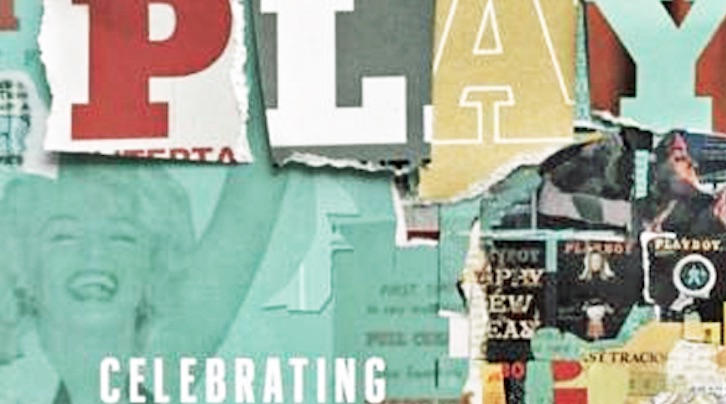
Detail of Playboy cover created by Derek Gores
“I used some tiny covers mixed with larger elements from the famous Andy Warhol bunny and the classic black and gold bunny,” he said. “There are all the elements the magazine was known for, including interviews, music and movie reviews, stories, cartoons, certainly little hints of centerfolds and questions for the Playmates…All of the layers are in there.”
For his own enjoyment, he put in the 1980’s album review of Prince’s Purple Rain and an interview with David Lee Roth. For his late father, Gores included an image of Farah Fawcett in the center top.
He grabbed different letters from the Playboy masthead to create the word “PLAYBOY” in a ransom note style with shadowing to look like the letters are sitting atop the artwork.
“So this project is interesting to me because Hugh Hefner was a complicated character,” Gores said. “He remained relevant in social change for decades. He was a progressive who was about freedom of speech, of expression. He was a civil rights supporter who put his money where his mouth was.
“I realize I’m a man creating images of women, and I never want to objectify a woman. This moment in time is fascinating with expression of sexuality and equal strength. So this came at a fascinating time for me to be able to explore this topic and make a portrait of someone who was there for so many years.”
Creating the Playboy cover may have taken only three weeks, but it was decades in the making.
Born in New York and raised in Concord, Mass., Gores moved with his family to Florida when he was 10 years old. He graduated from Satellite High School in 1989 and returned north to go to school at the famed Rhode Island School of Design.
“It broke my mind open into a balance of fine art and commercial art which has served me well,” he said.
Indeed, the artist went into creating t-shirt designs for the Grateful Dead. He moved to Tampa where he became an art director for VF Imagewear in charge of designing t-shirt art for big sport leagues .
Ten years ago, in order to be closer to family, Gores returned to Brevard with his first wife and their three daughters.
“I did apply to ad agencies and marketing firms here in town,” he said. “Thankfully there was no job that would fill that blank. I was forced to go for it.”
That meant opening his own studio and promoting himself rather than rock groups or sports leagues.
Fortune smiled when he met three other emerging artists – Cliffton Chandler, Ryan Speer and Casey Decotis. The foursome soon became all the art rage in Brevard, organizing hip exhibits and happenings like Robot Love.
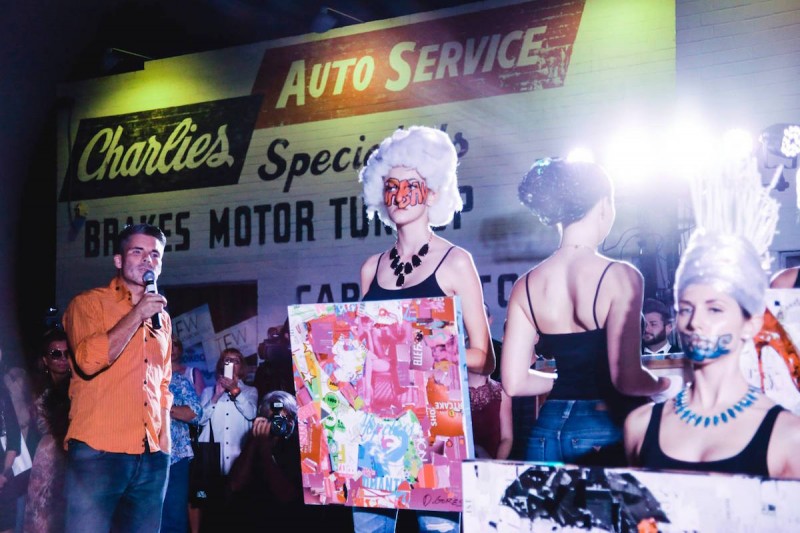
Derek Gores at solo show to kick off Tucson Fashion Week in 2015.
During that heady time, Gores got some of his collage pieces into the 2009 Manifest Hope exhibit in Washington, D.C. The jurors included “Obey” artist Shepard Fairey, filmmaker Spike Lee and R.E.M. singer Michael Stipe. It won him a commission from a national labor union.
“I was starting to get noticed,” he said. “Ripples in the pond were growing.”
Now, after the Playboy cover, those ripples are gaining steam.
“Yeah, there have been calls,” he said. “Internationally I’m speaking with a major brand from Italy for Milan Fashion Week. So yes, it’s already been some interesting follow up.”
Melbourne Village arts patron Joan Taddie is not surprised at his growing fame. His work, she said, is “unique.”
“His art to me is magnificent,” she said. “It’s more than an image. The personalities jump out at you. The collages come alive.”
In addition to all this, Gores still makes time to be a voice and proponent for the arts in Brevard. His gallery helped get the tech incubator, Groundswell, onto its feet and is the home for improv comedy, a modern dance company and select musicians.
He’s created work for TV show “The Kardashians,” been referenced by Forbes Magazine, shown at Art Basel Miami and in Los Angeles. But that Playboy commission has him fantasizing about a life-long dream car Lamborghini.
“Maybe I can work with them,” he mused.
To see Derek Gores’ work online, visit DerekGores.com. To see it in person, visit the Derek Gores Gallery, 587 W. Eau Gallie Blvd., Melbourne, FL. Hours are 2:30 to 5:30 p.m. Tuesdays through Fridays and 1 to 5 p.m. Saturdays. The gallery is also open during special events by by appointment.
This is an edited version of a story running in the Melbourne Beachsider.

